Shasta Daisy Garden Ideas: Brighten Your Yard with Perfect Blooms
Shasta daisies are bright and cheerful flowers that can bring life to any garden. Whether you have a large backyard or a small space, these perennials are versatile and can fit beautifully into your landscape. Their classic white petals and yellow centers make them a timeless addition to flower beds, borders, and even as cut flowers for your home.
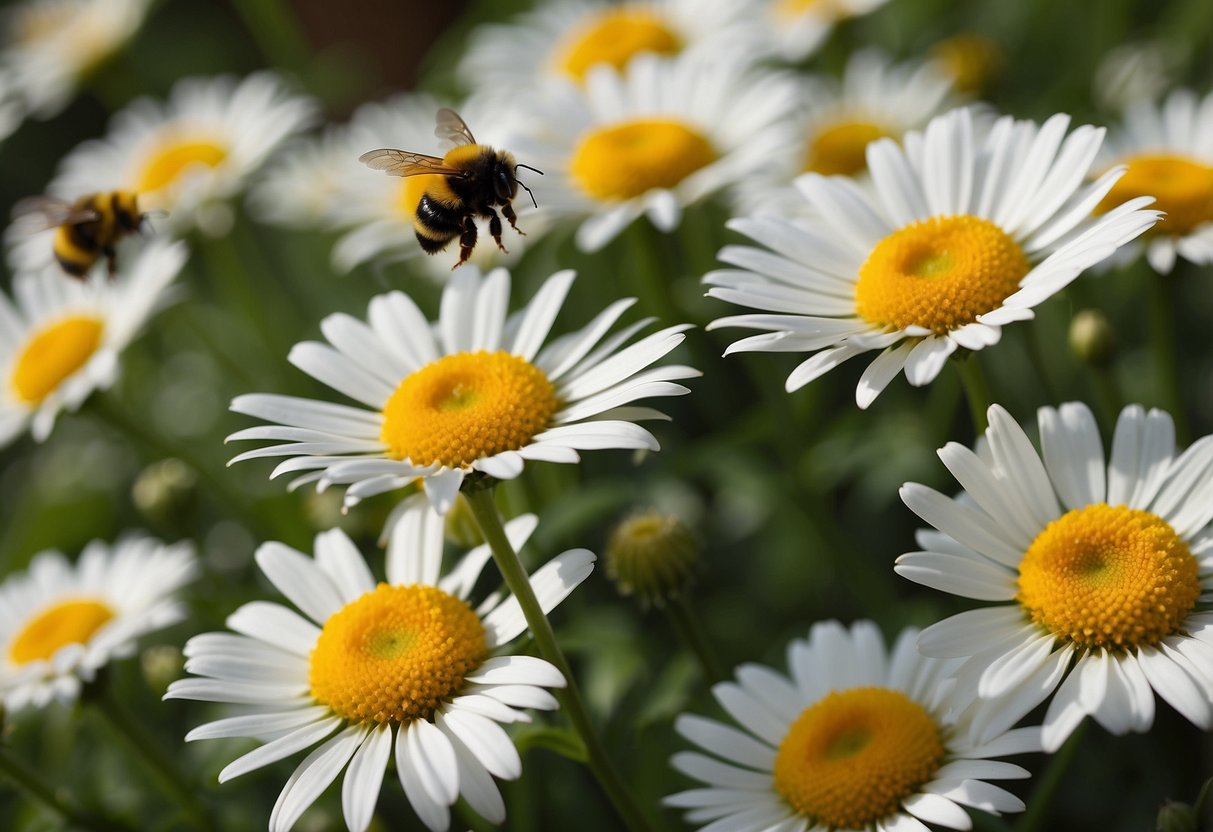
Looking to add a touch of elegance and simplicity to your garden? Shasta daisies may be just what you need. They thrive in full sun and well-drained soil, making them an easy choice for gardeners of all levels. With a bit of care and planning, you can create a stunning display that will bloom year after year.
1) Add a Stone Pathway
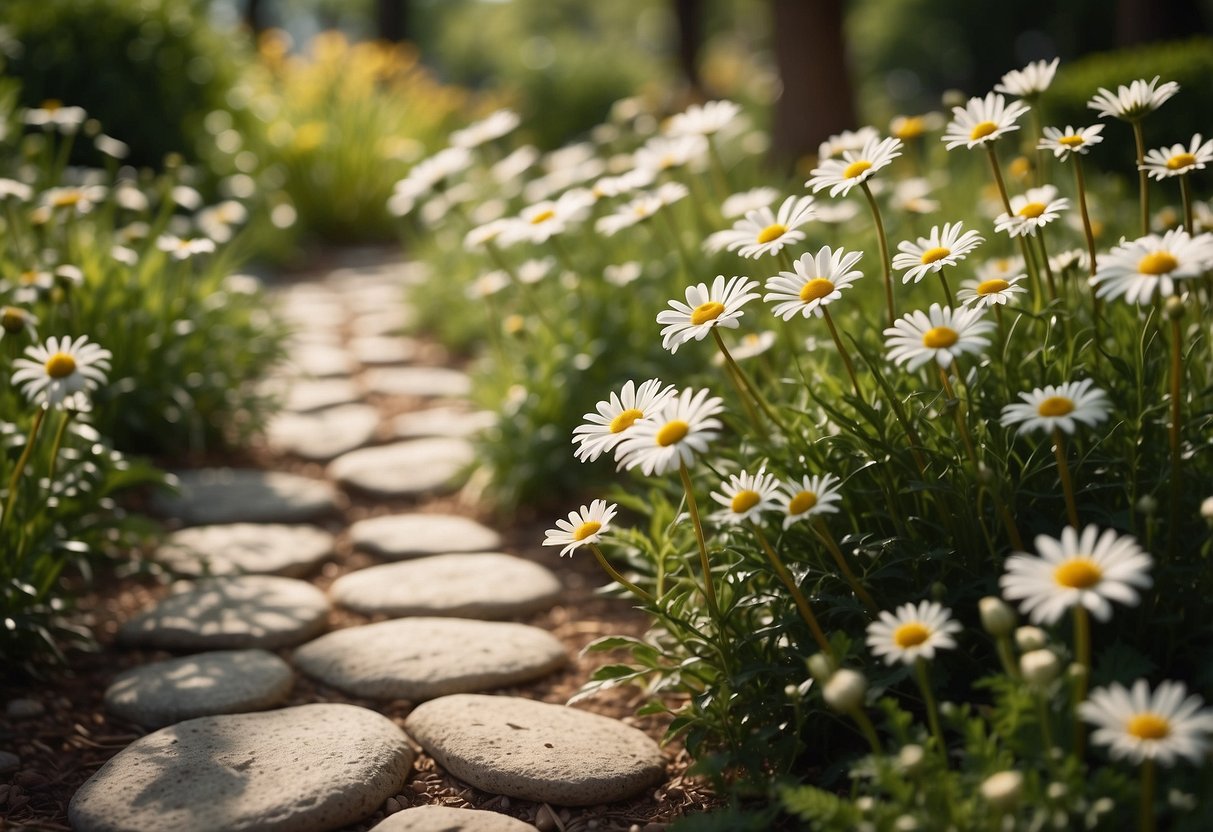
A stone pathway can make your garden more inviting and beautiful. It leads visitors through the blooms, offering a clear route to enjoy every part of your garden.
Choose natural stones that complement your Shasta daisies. Place them carefully to create a balanced and pleasing look.
You can also add small pebbles between the stones for a natural appearance. This simple touch adds charm and elegance to your garden space. For inspiration, check out these garden stone pathway ideas.
2) Use Raised Beds for Elevation

Raised beds are great for growing Shasta daisies. They help with drainage, preventing waterlogging.
You can position them in sunny spots for the best growth. The beds also make it easier to control the soil quality.
Plus, raised beds are easier to reach for planting and care. This creates a more comfortable gardening experience.
3) Plant in Colorful Containers
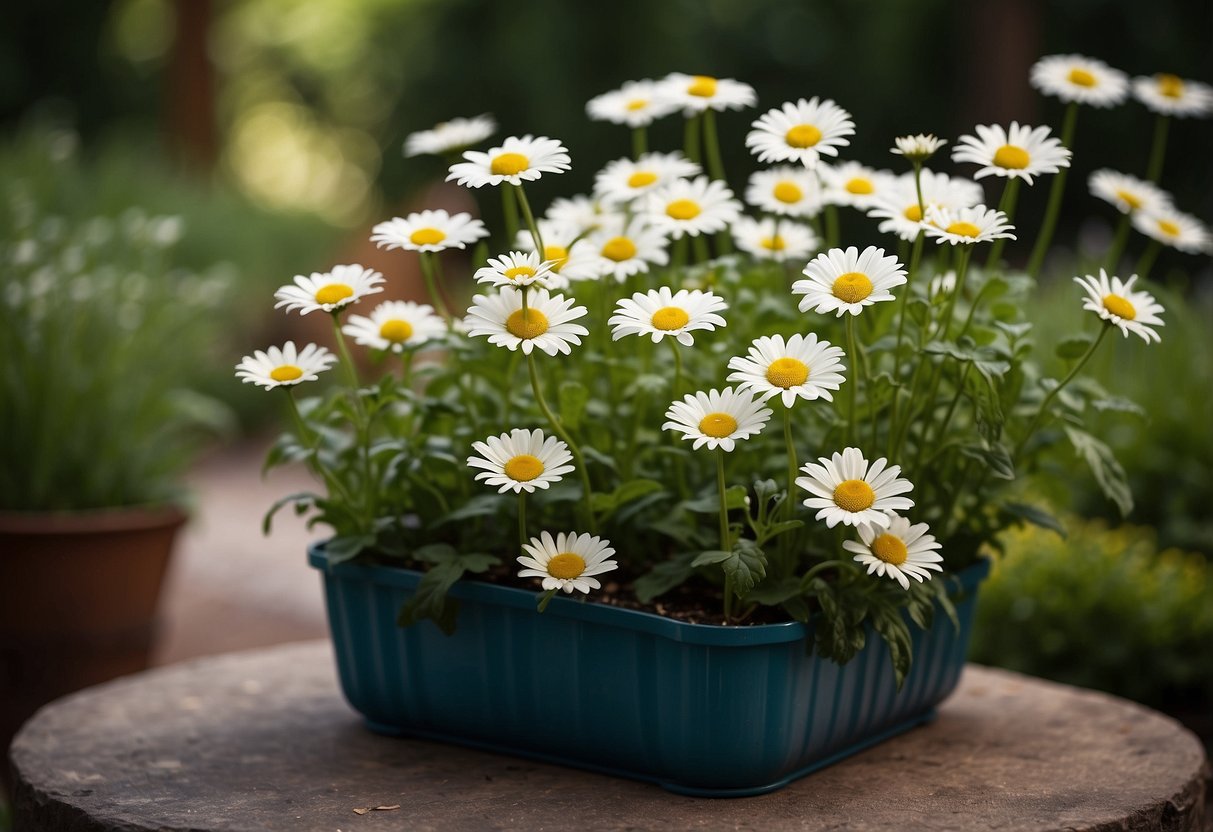
Shasta daisies look amazing in bright, colorful containers. Choose pots in shades that contrast with the white petals of the daisies.
Make sure your containers have proper drainage to keep the soil from getting soggy. Water them regularly when the topsoil feels dry.
Place your pots in sunny spots, though they can handle some shade. Regular pruning helps them stay healthy and encourages more blooms. Learn more about caring for Shasta daisies in pots.
4) Incorporate Lavender for Contrast
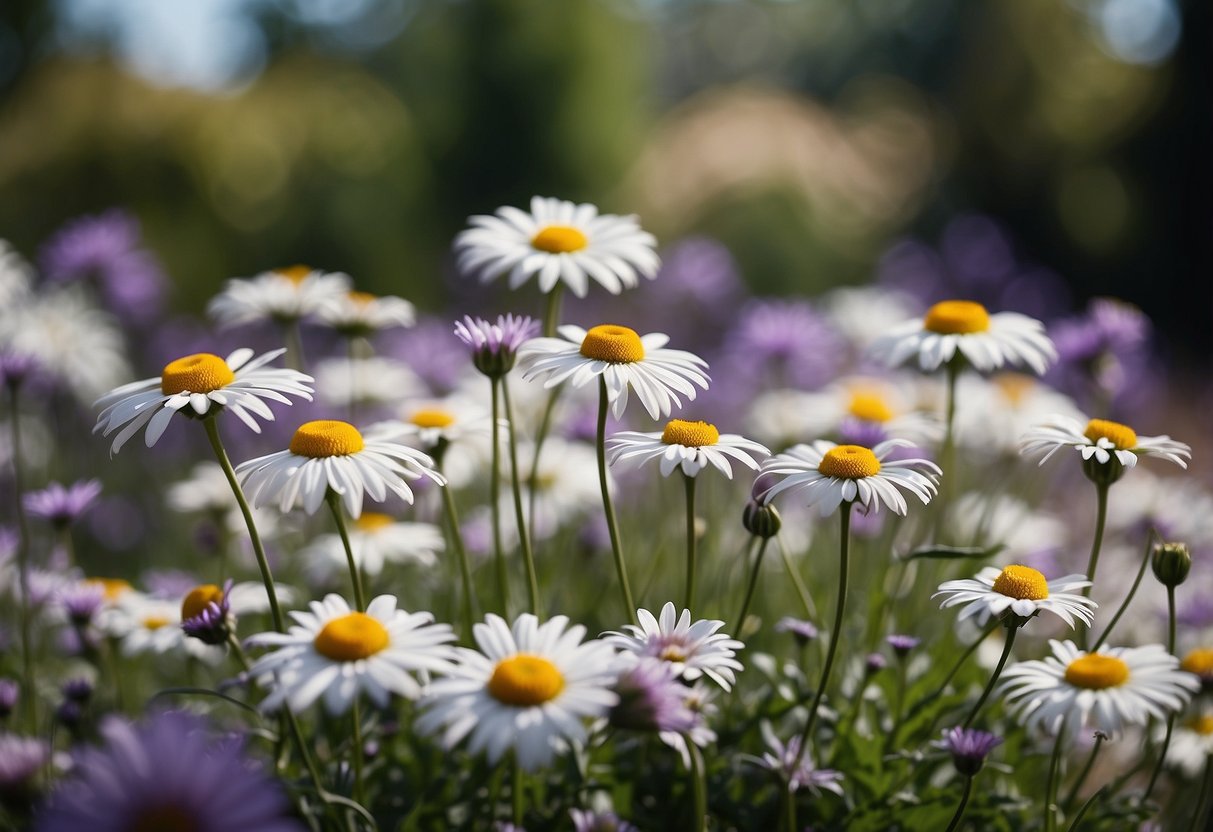
Lavender’s purple flowers and silvery foliage offer a lovely contrast to the white petals and green leaves of Shasta daisies. This color difference creates a visually appealing garden.
Lavender also has a pleasant scent that can complement the daisies. It’s a great way to add both beauty and fragrance to your garden space.
5) Place around a garden bench
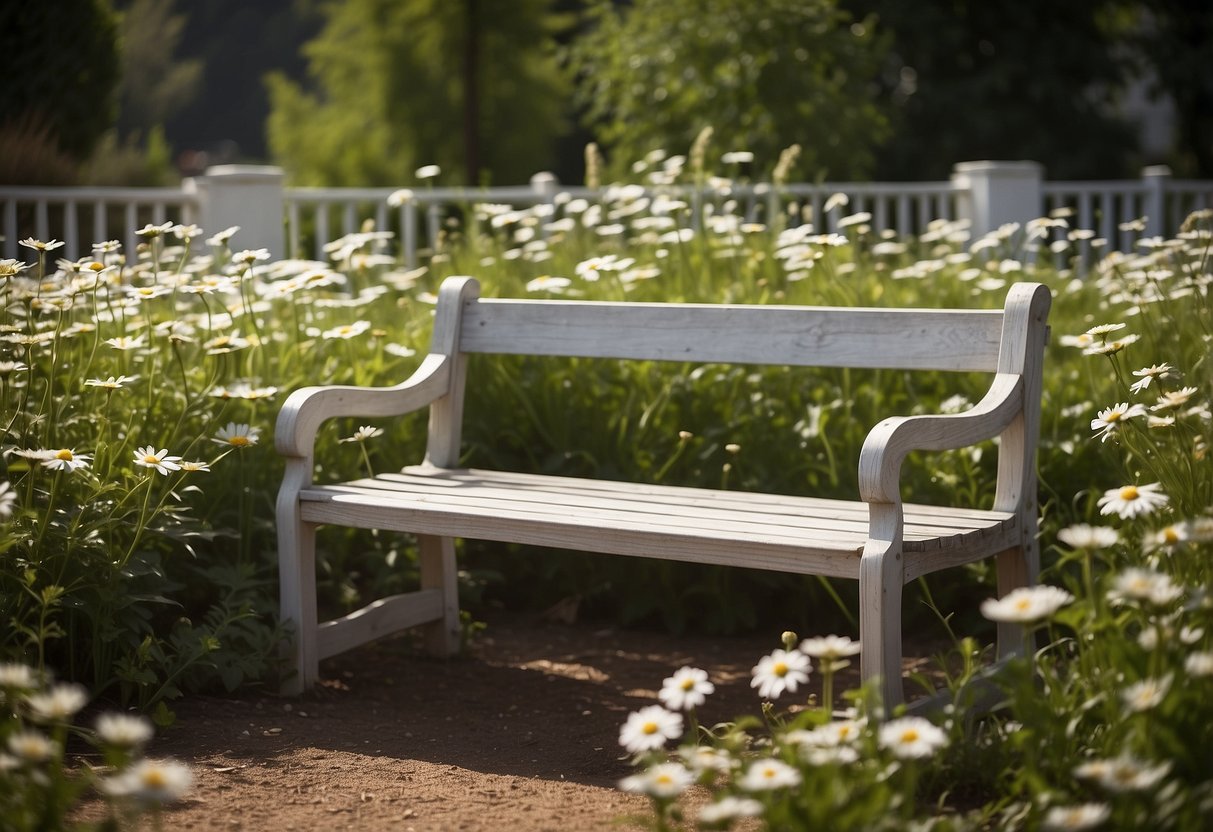
Planting Shasta daisies around a garden bench creates a charming and peaceful spot for relaxation. The bright white flowers stand out beautifully against the greenery and provide a cheerful atmosphere.
Shasta daisies are easy to grow and maintain, making them perfect for this setting. They are also deer and rabbit resistant, ensuring your bench area stays lovely.
Pair them with colorful companions like lavender or coneflowers for added visual interest. This combination invites you to sit and enjoy the beauty of your garden.
6) Mix with Ornamental Grasses

Combining Shasta daisies with ornamental grasses can create a striking display. Ornamental grasses such as maiden grass or moor grass add texture and height.
Shasta daisies provide bright blooms, while grasses offer soft, flowing movement.
You can plant tall grasses behind your daisies to create a layered look. The grasses will also help screen off areas, giving your garden more privacy.
For more ideas, check 15 Beautiful Ways to Use Ornamental Grasses.
7) Edge Walkways for a Neat Look
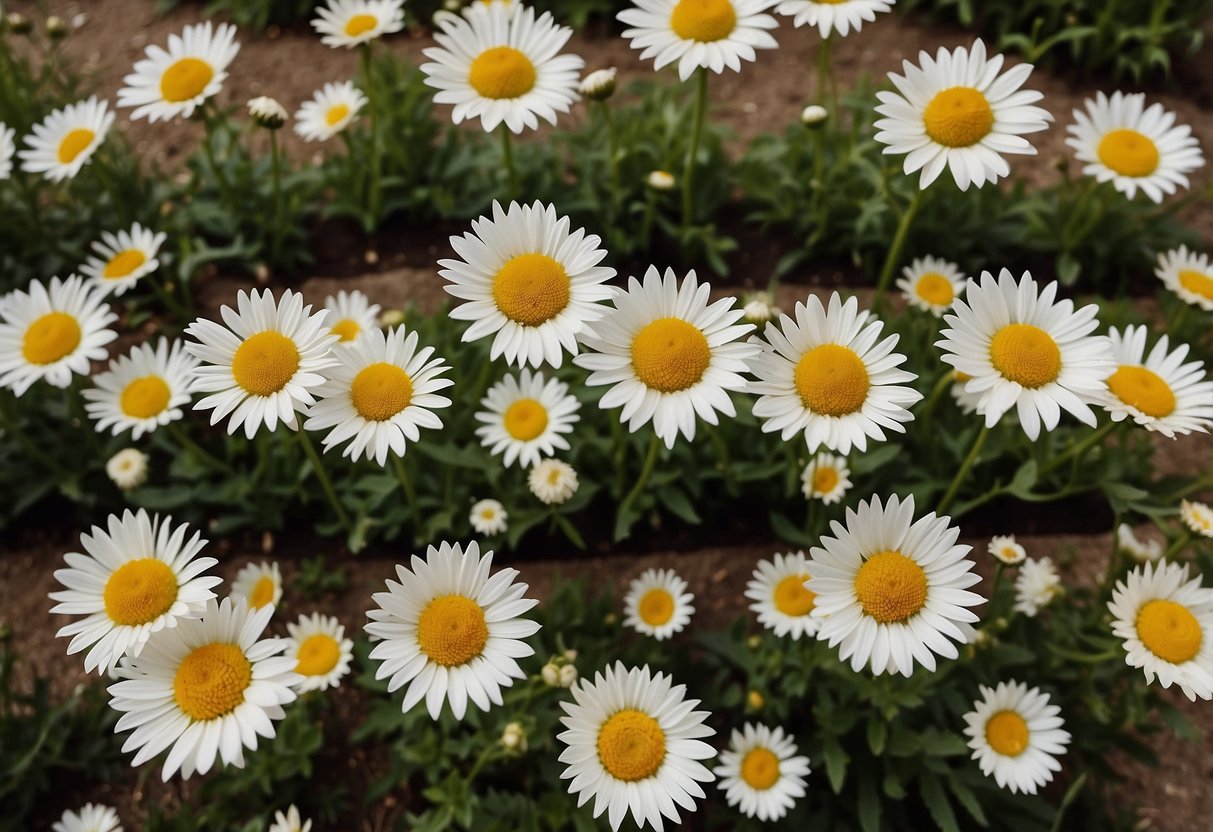
Shasta Daisies can make your walkways look charming. Plant them along the edges to create a clean and inviting path.
Make sure you plant the daisies evenly. This gives a balanced and tidy appearance.
Maintaining the edges regularly will help your walkway stay neat and attractive. Enjoy the lovely view!
8) Create a wildflower border
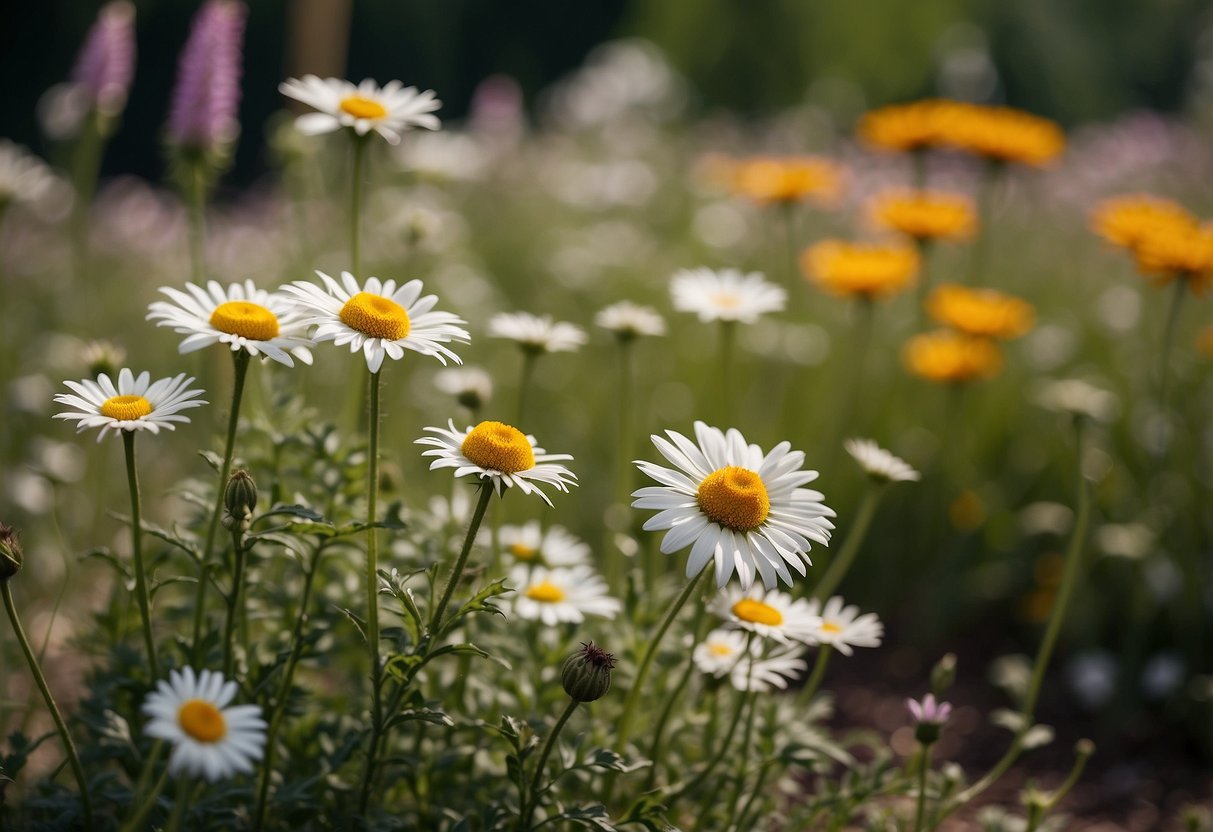
A wildflower border filled with Shasta daisies can add charm to your garden. Start by choosing a sunny spot with well-drained soil. Shasta daisies thrive in these conditions.
Mix Shasta daisies with other wildflowers for a colorful display. Consider planting coneflowers, black-eyed Susans, and lavender. This combination will attract pollinators and add variety.
Space the plants according to their mature sizes. This ensures they have room to grow without overcrowding. Regularly remove weeds to keep the border looking neat and healthy.
9) Pair with Coneflowers
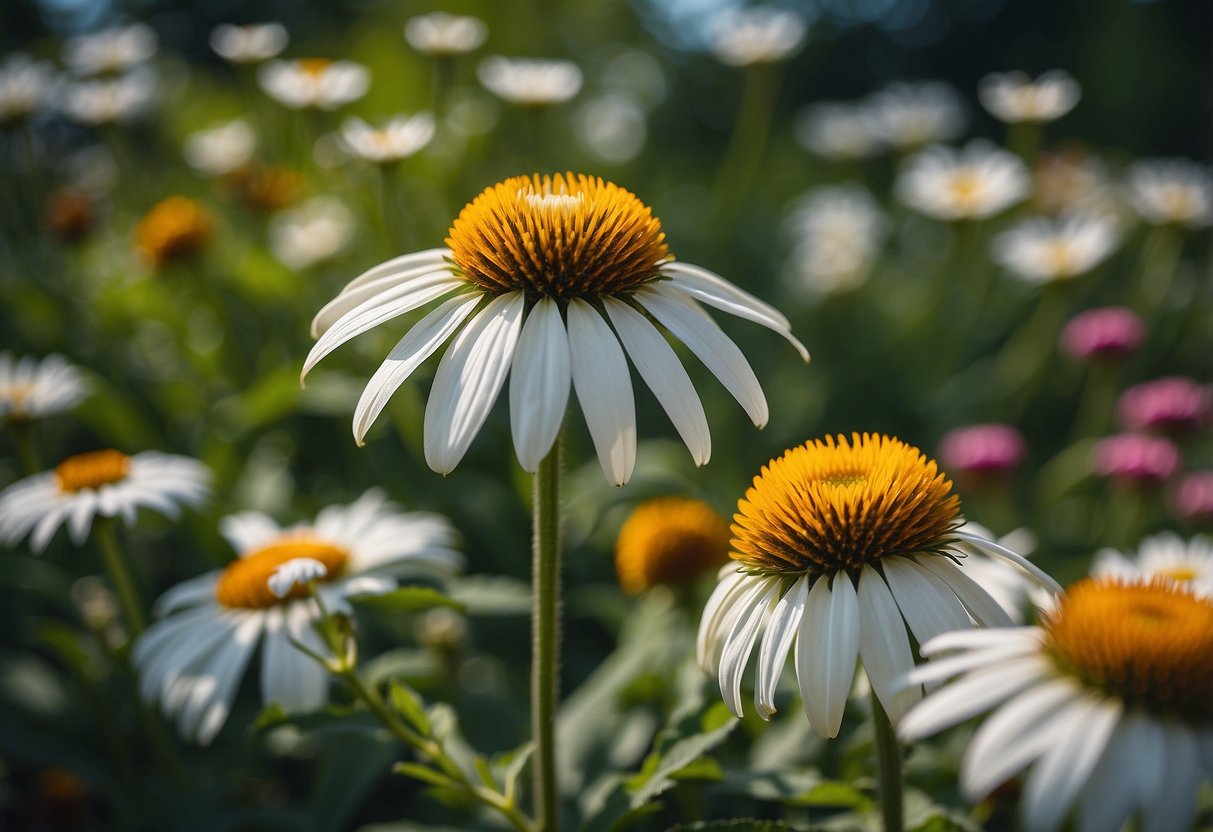
Planting Shasta daisies with coneflowers creates a beautiful garden display. Both plants have similar needs, such as full sun and well-drained soil.
Purple coneflowers add a lovely splash of color and attract butterflies and bees. Their blooms complement the white petals of Shasta daisies perfectly.
Try placing coneflowers behind your daisies. This will give your garden a layered look full of vibrant, flowering plants.
10) Create a dedicated daisy garden
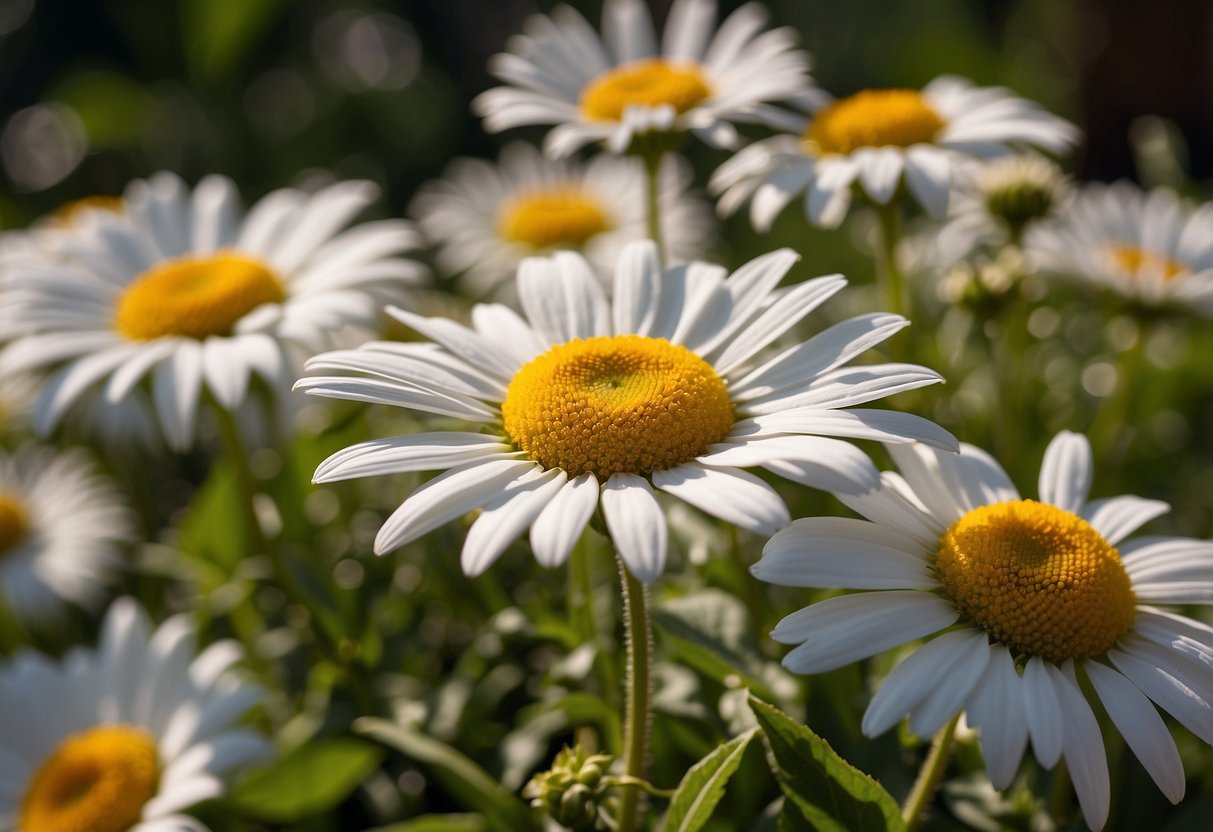
Imagine a whole section of your garden just for Shasta daisies. These bright, white flowers with yellow centers can light up any area.
Shasta daisies grow well in full sun and well-drained soil. They can reach up to 3-4 feet in height, creating a lovely display.
Plant them in clusters for a fuller look. Mixing different varieties can add more interest. For instance, you can include Crazy Daisy varieties.
Regular watering and occasional fertilizing can keep your daisy garden thriving all season long.
Choosing The Right Shasta Daisy Varieties

Picking the perfect Shasta Daisy varieties depends on your garden’s needs and your local climate. Each variety has unique features, such as bloom color and plant height, and some thrive better in specific environments.
Popular Varieties
Shasta Daisies come in many varieties, each with its own charm. ‘Banana Cream’ is a favorite for its lemon yellow blooms that turn to creamy white as they age. This variety brings a splash of color to any garden.
‘Alaska’ is another well-loved variety. Known for its height, it reaches up to 3 feet and is especially durable, even in dry conditions. This type is ideal if you want a taller plant with strong stems that don’t need staking.
‘Becky’ is yet another choice, appreciated for its long blooming period. Its bright white petals and golden centers make them stand out in any garden design. You can find more about these varieties on Garden.org.
How To Select Based On Climate
Your local climate plays a crucial role in choosing the right Shasta Daisy variety. Most Shasta Daisies are hardy in USDA zones 5-9. If your garden experiences hot summers, varieties like ‘Alaska’ are very drought-tolerant and will perform well.
In milder climates, you might opt for varieties that stay evergreen. ‘Becky’ is an example of a reliable performer in these conditions. If you live in an area with harsh winters, make sure to select a variety that can handle cold temperatures.
Always consider the sun exposure in your garden. Shasta Daisies flourish in full sun, but if you have partial shade, look for more adaptable varieties like ‘Banana Cream’. Each choice will help ensure your garden stays vibrant throughout the growing season. For more climate-specific advice, check Savvy Gardening.
Planting And Growing Shasta Daisies

Shasta daisies are lovely additions to any garden. They are relatively easy to plant and care for if you follow the right steps. Here are key details on soil preparation and planting techniques to help your Shasta daisies thrive.
Preparing The Soil
Start by choosing a location with well-draining soil since Shasta daisies don’t like soggy roots. You can test the drainage by digging a small hole and filling it with water; if the water drains quickly, the soil is suitable.
For optimal growth, mix compost or organic matter into the soil. This will add nutrients and improve its texture. Shasta daisies prefer slightly acidic to neutral pH levels, around 6.0 to 7.0. You can use a soil pH tester available at most garden centers to check this.
Make sure to remove any weeds and large rocks from the planting area. Weeds can compete with your daisies for nutrients and water. If the soil is too compact, loosen it up with a garden fork or tiller to allow the roots to penetrate more easily.
Proper Planting Techniques
Plant Shasta daisy seeds indoors about 6 to 10 weeks before the last frost. Use small pots filled with rich, moist soil. Press the seeds lightly into the soil without covering them completely—they need light to germinate.
When transplanting, dig holes twice the diameter of the root ball. Place the plants in these holes with the root ball level with the soil surface. Space each plant 1 to 2 feet apart to allow for proper air circulation and growth.
Water thoroughly after planting and keep the soil moist. When the seedlings are strong, you can move them outside. Plant nursery-grown daisies in the spring, once frost danger has passed. Keep them well-watered for at least a week or until they establish roots.
Maintaining Your Shasta Daisy Garden

Keeping your Shasta daisies healthy and vibrant requires consistent watering, occasional fertilizing, and vigilance against pests and diseases.
Watering and Fertilizing Tips
Shasta daisies need about an inch of water per week. During dry spells, make sure to water them deeply, letting the soil dry out between waterings. These daisies are drought-tolerant, so avoid overwatering which can lead to root rot.
In spring, apply a balanced, slow-release fertilizer to encourage growth. You can use a 10-10-10 type fertilizer. Spread it around the base of the plants, being careful not to touch the stems. Organic compost is also a great option to enrich the soil naturally.
Pest and Disease Control
Shasta daisies are generally hardy but can be attacked by aphids, slugs, and earwigs. To control aphids, try spraying the plants with a mix of water and a few drops of dish soap. Slugs can be deterred by placing copper tape around the garden or using slug pellets.
Leaf spot and powdery mildew are common issues. Ensure good air circulation by spacing plants adequately and cutting back dense growth. If disease appears, remove and destroy affected leaves promptly. Fungicides can be used as a last resort for persistent problems.







